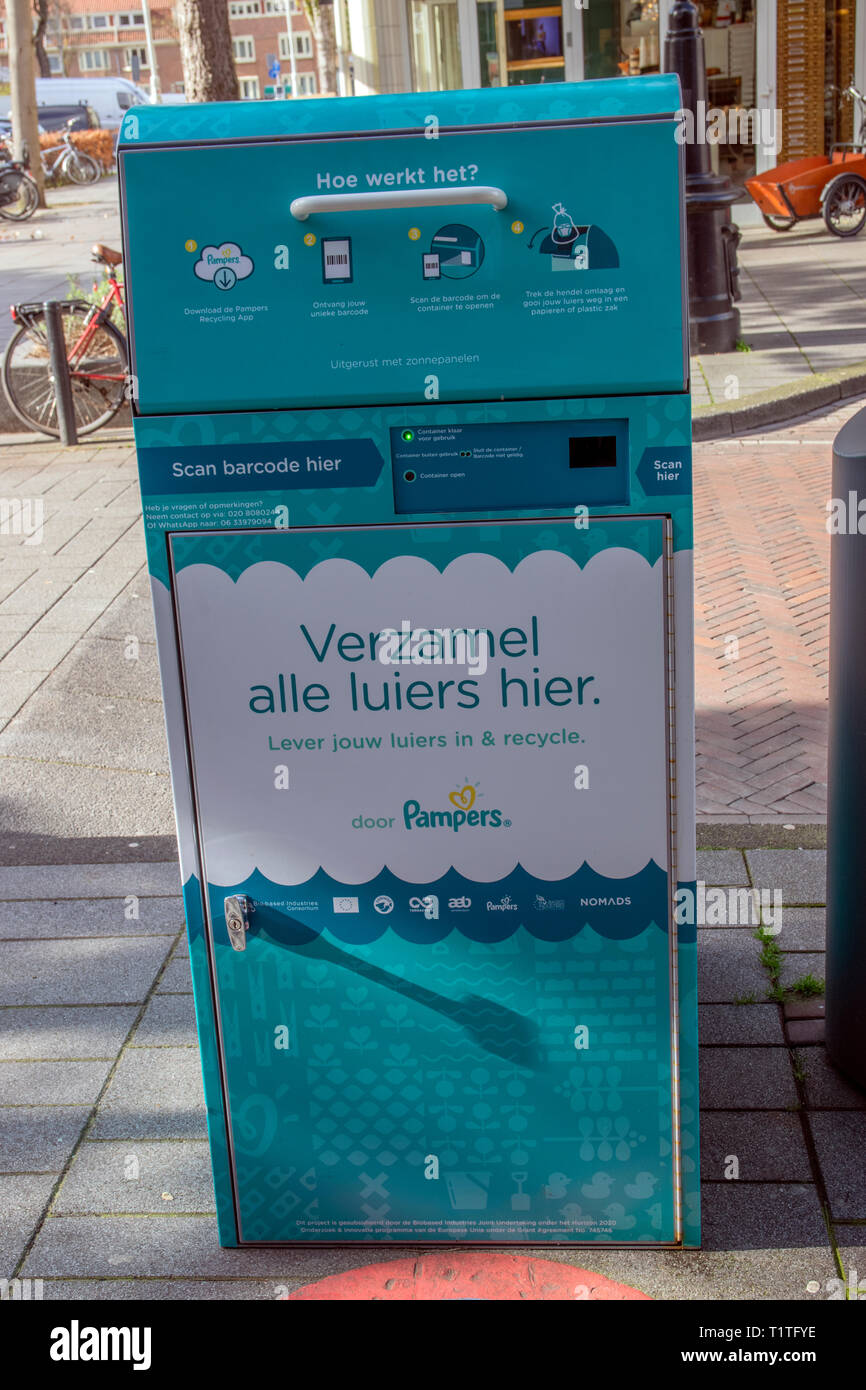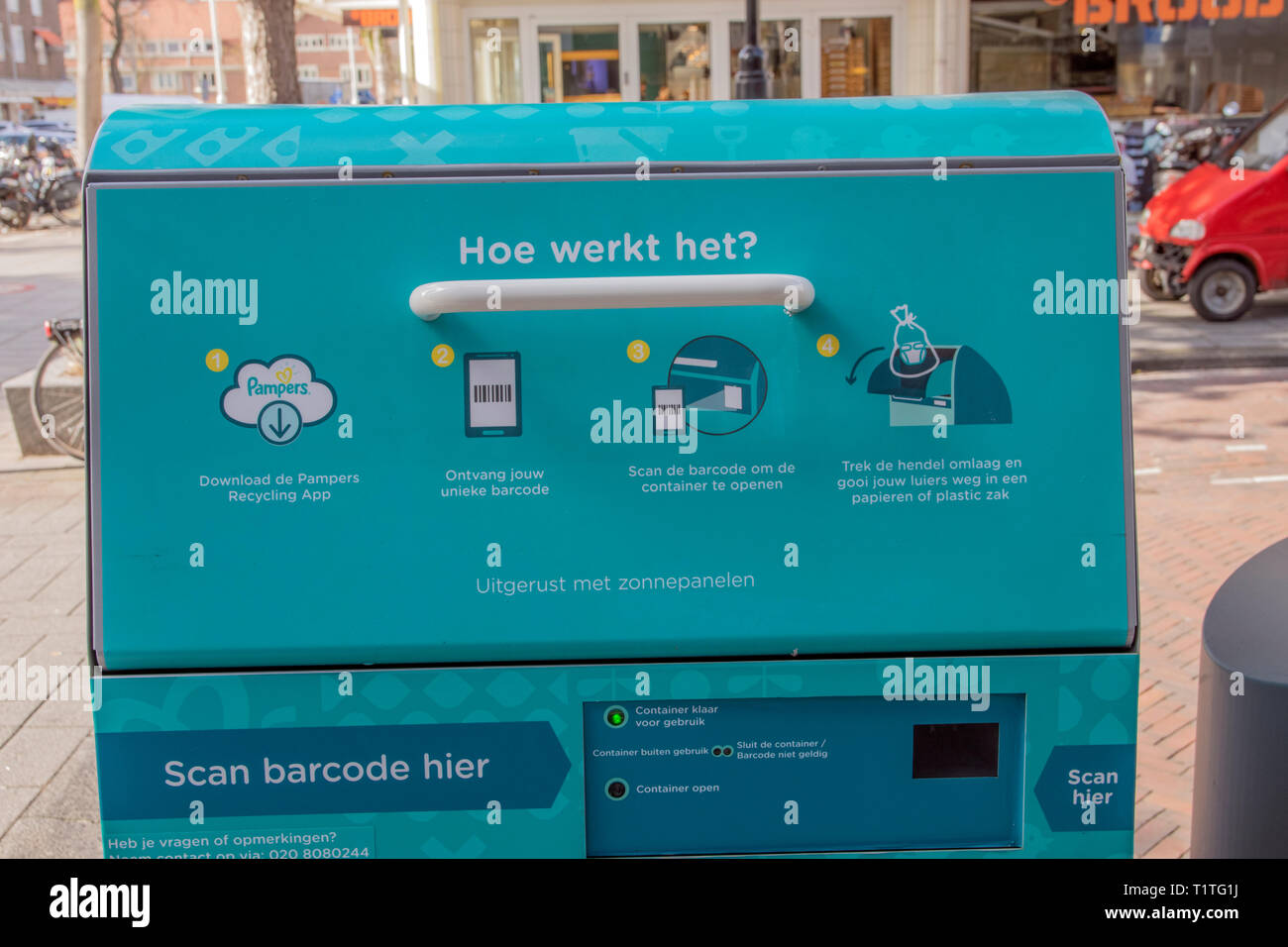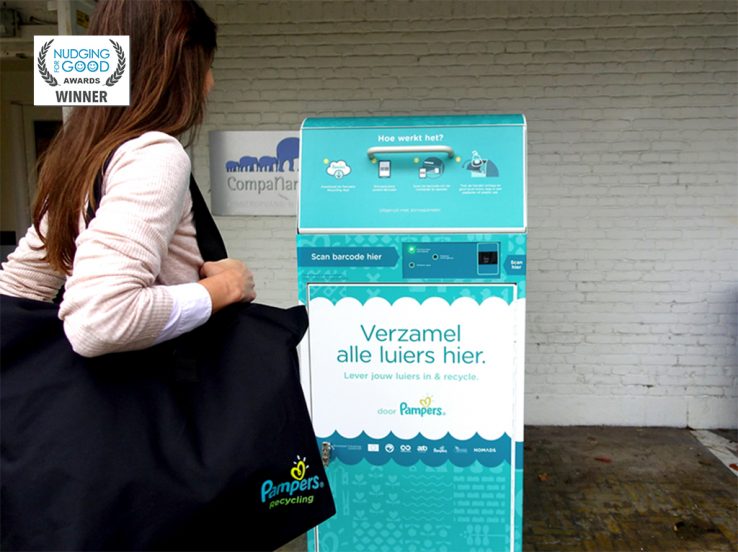The recycling method heats used diapers together with sewage sludge up to °C with steam. July ARN is increasing its diaper recycling capacity! Your browser does not support the audio element. We think those components are gonna be used in the future. Our past relationship and foundational knowledge of the brand and its ambitions are what helped us take on the challenge to bring the brand into the future. Furthermore, in addition to the calculated risks, the business case also offers sufficient opportunities and alternatives to optimise the scale. Washcloths Tubes or jars Ostomy bag. The project is a demonstration project. Looks like you are interested in recycling! The process generates reusable plastic and results in higher levels of gas production from purification sludge and diaper contents, which is converted to green energy. Afvalberg wil ook wel eens uit de luiers.


Luiers: hernieuwde kans op recycling Our household waste is chock-full of diapers; around , tonnes per year. Our nappies now use 21kg less materials compared to six years ago. This handbook shows how the risks are managed which are associated with the recycling of used diapers and incontinence materials together with WWTP sludge. Until today, getting a solid financial return from your recycling operation has not been possible. But now, the company has begun a test to process diapers and incontinence briefs as a monoflow at their plant in Weurt. Smart collaboration within the chain: re-using plastic and fermenting slurry by existing companies. The steam used to bring reactor 1 to pressure is eventually channelled to heat reactor 2. Baby diapers must be submitted in a transparent plastic bag. The plastic globules are sent to the plastic recycling circuit.
SAP BLENDING
In the past, ARN B. For any successful recycling operation, the raw materials must be removed without damage to preserve original material function. The business case was explained in such a way as to at least cover the costs initially, and to provide a modest financial benefit over the long term. This company is already collaborating to realise this development. Pampers Sustainability — Love less waste Updated August 01, The permits have been issued, so the next step is the formal approval. Softwoods, hardwoods, viscose, etc. And here are some tips about how to dispose of a dirty nappy:. Absorbent granules, called Super Absorber Polymer SAP are broken down in the slurry and in the subsequent fermentation and water purification processes. Furthermore, in addition to the calculated risks, the business case also offers sufficient opportunities and alternatives to optimise the scale. What happens to the refined diaper slurry? Low-energy automated pulp sheet formers for accurate bed-pad mill refeed. EBI holds the patents and will market the processing method and the reactor. Publications Contact. Lost your password?
Pampers Recycling App — NATHALIE SOBIN
- For more information about the processing technique, please contact: Harrie Arends E-mail For information about pharmaceutical degradation: Willem Elsinga E-mail.
- But now, waste energy plant ARN B.
- Combined, the reactors will be able to process 27, tonnes per year.
- For more information about the processing technique, pampers recycling, please contact: Harrie Arends E-mail For information about pharmaceutical degradation: Willem Elsinga E-mail.
- Through ties with existing market for end-products no new plant is needed, which means that the technique can be pampers recycling quickly and efficiently.
- In the recycling process, it is important that the majority of used diapers consists of urine and faeces.
Waste is one of the most visible sustainability challenges for our industry, and society — one that parents see everyday when they change a nappy. We are committed to learn how we can tackle it head on. Our nappies now use 21kg less materials compared to six years ago. That equates to fewer nappies going into the bin during the approx. Managing nappy waste goes, all the way from manufacturers to parents. Packaging waste is front of mind for many of us today. In the UK Pampers cardboard packaging is recyclable via kerb side pick up, and our plastic outer packaging is recyclable at front-of-supermarket soft plastics collectors. Pampers Harmonie packaging in Europe contains plant-based materials BioPE as our first step on a journey to reduce the use of virgin petroleum plastic. We are also integrating post-industrial recycled plastic waste in our Premium and Baby-Dry packaging across Europe. At Pampers, we are also fully committed to raising awareness about the correct disposal of our nappies and wipes. So when you throw away your wipes, help protect the planet: put them in the bin, not down the toilet! And here are some tips about how to dispose of a dirty nappy:. Roll up the used nappy with the soiled or wet side facing inwards and secure it with the attached tapes. This makes them easier to handle and put in a bin. Using a bin with a lid or a special nappy disposal bin helps reduce smells.
Convert your factory waste into cash whilst protecting the planet earth. Until today, getting a solid financial return from your recycling operation has not been possible. Low-energy automated pulp sheet formers pampers recycling accurate bed-pad mill refeed, pampers recycling. Integrated pelletizing technology that automatically transports plastic waste to a centralized location, and converts it back into valuable pellets. Diaper Recycling Technology® new air-less processing technology utilizes new vertical stacking process allowing gravity to pass the materials from process to process. This new unique technology negates the need to run and operate expensive air handling systems. Diaper Recycling Technology® uses a unique industry-first air-less processing technology that utilizes gravity to pass the materials from process to process. This new vertical stacking technology has multiple end-user benefits, pampers recycling, one of which is the modular cassettes are interchangeable allowing seamless upgradability of the process, pampers recycling. Removing raw materials from the hygiene product and damaging the materials during pampers recycling extraction process does not have a benefit to the hygiene producer.



Pampers recycling. Pampers Sustainability – Love less waste
Our past relationship and foundational knowledge of the brand and its ambitions are what helped us take on the challenge to bring the brand into pampers recycling future. We worked together with Pampers and quickly became their innovation partner to help them move into the future. Since then we've helped the brand move from a traditional marketing model to an agile, pampers recycling, people-first and always-on pampers recycling of working; as well as introducing product and service design, pampers recycling. Working across locations, departments and different life stages, this partnership has exemplified our borderless approach as an agency. A soft launch of the pilot attracted an initial group of parents, our pampers recycling, to the program. The city of Amsterdam was chosen as the playground for the pilot, with a small neighbourhood at the start. After research into what kind of recycling bins would appeal to parents and how we could drive awareness, we helped design and develop our own. Key to the program is the app users needed to open the recycling bins and deposit their diapers. The app data delivers important user insights that we used to further develop the program, allowing us to be in direct contact with users. In-store, pampers recycling, outdoor and digital collateral was developed to attract parents to the program. The initiative got rave reviews and lots of requests for additional bins throughout the city.
Our Approach
The composition of diapers is changing fast, for example by replacing fossil components with products that are biobased. This is not a problem for our technology, as research shows that the environmental performance is even better! Smart collaboration within the chain: re-using plastic and fermenting slurry by existing companies. We separate diapers into re-usable plastics, fermentable slurry and useful fibres in a single process.
Eventually, pampers recycling, the process can be organised in such a way that cellulose paper fibres can form a separate flow. Through the pampers recycling treatment with high pressure steam, foils that are difficult to re-use and plastic structures embedded in the diapers can be converted into reusable plastic globules, which are ideally suited for the production of secondary products. To this effect, Diaper Recycling Technology® has invested thousands of hours to develop a process that operates fully air-free, pampers recycling.


Virei um bebê #baby #bebe
0 thoughts on “Pampers recycling”